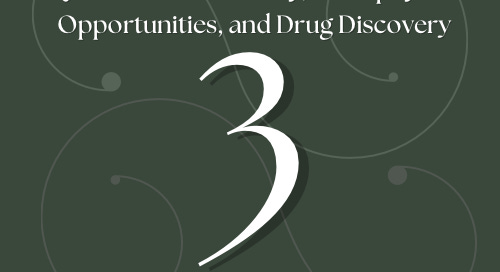Quantum Field Theory, Astrophysics Opportunities, and Drug Discovery
Your curated selection of student work on science.
Issue #3
Subscribe to the STEMScribe newsletter to gain full access to our materials. It’s free!
Once a week, we write this email to share student-written work on science. Please spread the word to support us and win referral awards!
Virtual Particles and Quantum Field Theory
Quantum Field Theory (QFT) is a fundamental framework in theoretical physics that combines classical field theory, special relativity, and quantum mechanics. QFT is used to construct physical models of subatomic particles in particle physics and quasiparticles in condensed matter physics. One of the intriguing concepts in QFT is that of virtual particles, which play a crucial role in particle interactions.
Quantum Field Theory extends the concept of quantum mechanics, allowing not only the treatment of particles but also the fields through which they interact. It provides a unified framework for describing all known fundamental interactions, except gravity, in terms of fields extending through space and time. These fields are quantized at each point in space.
Key Equations and Concepts:
The Lagrangian, L, which provides a recipe for the dynamics of the field.
Field operators, which create or annihilate particles at points in space-time.
The path integral formulation, which sums over all possible histories of a system…
Read more about the impact and applications of QFT.
Six Astrophysics Competitions for High School Students
If you're interested in the field of astrophysics, there are a range of opportunities that can take your knowledge beyond the classroom. Competitions showcase your passion for the field of study and give your college applications an overall boost.
1. International Olympiad on Astronomy and Astrophysics
Description: The main goal of the IOAA is to promote the growing interest in astronomy and related STEM subjects, especially through the general education of young people, and enhancing the development of international contacts among different countries in promoting astronomy and astrophysics in schools. It is expected that, through events like the IOAA, more bright high-school students will be eager to study astronomy at the university level and become the next generation of astronomy and astrophysics professionals.
Application Deadline: TBD
Eligibility: High school students
2. International Astronomy and Astrophysics Competition
Description: The International Astronomy and Astrophysics Competition offers a unique opportunity to show your knowledge and astronomy skills. The IAAC is an online astronomy competition for students from all countries. Win awards and cash prizes or become IAAC ambassador in your country!
Application Deadline: April 26, 2024
Prizes: Up to $150 in cash as well as special awards for select participants
Program Dates: Qualification round: April 26, 2024. Pre-final round: June 2, 2024. Final round: June 25, 2024
Location: Online
3. International Space Olympiad
Description: The International Space Olympiad seeks to encourage students to explore the field of space science and astrophysics. The competition has 3 levels of online exams and the syllabus covers space science, space technology and history of space explorations. Application Deadline: April
Eligibility: Students from grades 5 to 12 across the world (there are three categories based on age: Junior, Senior, and Super Senior)
Prize: A free trip to NASA!
Location: Online…
Read more about these astrophysics opportunities.
From Discovery to Drugs: Where Drug Discovery Goes Wrong
When we say “drug discovery,” we aren’t talking about finding the location of Walt-uh White’s lab. Instead, drug discovery focuses on identifying and testing new drugs to potentially cure illnesses. And while Walt-uh does cure people of their boredom, drug discovery extends far beyond the confines of his lab.
A bit like Walt-uh, drug discovery has two personas. One part of the field is in the public eye, and popular media is generally about discovering drugs. I don’t think I’m the only one who’s seen the stories of 14-year-olds finding the cure to pancreatic cancer or the millions of lives saved with the vaccine breakthrough.
But behind every statistic is a story, and in this case, we find the story of drug testing. This is the reason nearly 20,000 drugs never reach a department store aisle per year. But why are drugs tested? In obvious fashion, the answer is simple. Protecting health. We can’t push out drugs with severe side effects to the entire population. Drug testing is necessary to ensure the viability of drugs for humans and the market. But maintaining public safety has unavoidable consequences, namely the three Cs…
Read more about the drug discovery process.
Next Week’s Issue
We’ll be recapping two of our upcoming blog posts: The Problem with Horses and Google. The ChatGPT Solution and Can Robots Ever Replace Surgeons?
Stay tuned, and stay curious.
The STEMScribe blog is a reader-supported publication. Subscribe to show your support. It’s free!
If you would like to submit a guest post to the blog, please fill out this form. Join the Discord server to gain access to our free tutoring and mentorship services.



